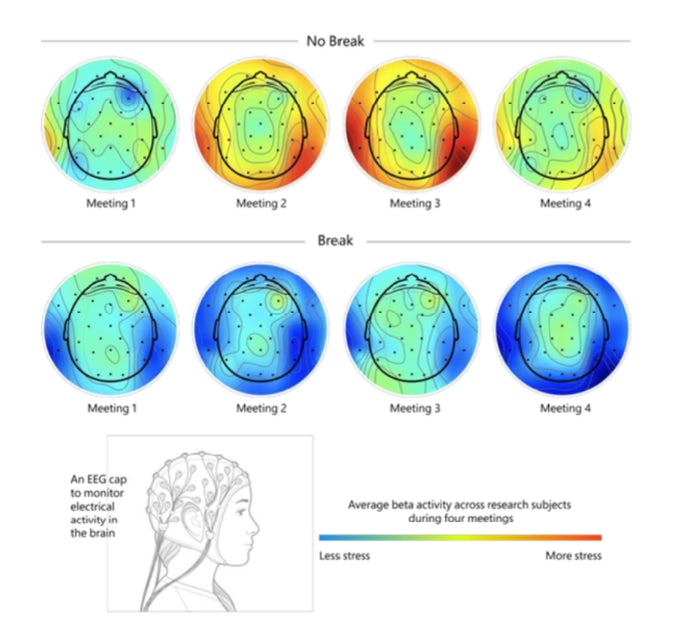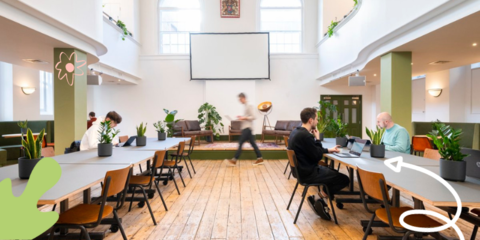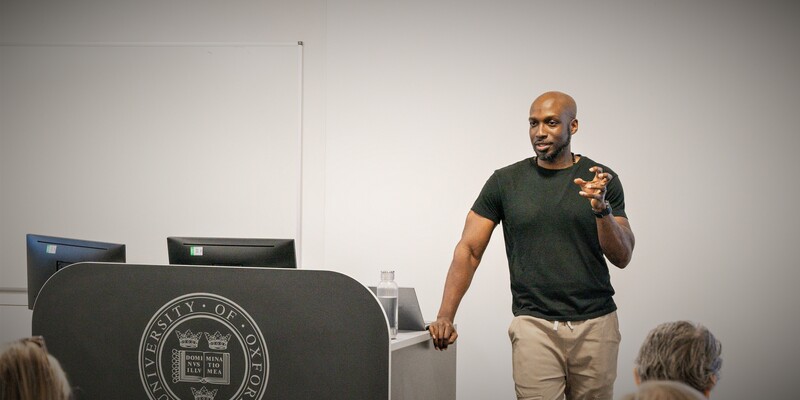Productivity statistics: surprising trends and insights to boost your work

By Micah Yongo
•
May 30, 2024
Productivity isn’t always what it’s cracked up to be, especially when remote working. Distractions are everywhere, and procrastination is a continual challenge.
Having delved deep into the science behind deep work, we’ve compiled the ultimate list of essential facts about focus, burnout, and what it takes for teams and individuals to be at their most productive.
Whether you're:
Trying to create an inclusive workspace
or just looking for ways to boost your own productivity
You'll find research, data and statistics to help kick procrastination to the curb and ensure you work at your best.
So, let’s get to it…
The impact of focus on productivity
Focus and remote work: A survey by PPL PRS has revealed 66% of remote working professionals struggle with focus while working from home
Digital distractions: According to research the average worker is interrupted by digital distractions every 11 minutes, significantly impacting productivity.
The cost of distractions: Research by the University of California, Irvine shows it takes 23 minutes on average to regain full focus for each and every interruption, reducing overall productivity by up to 40%. Interruptions, according to this same research, also increase stress.
Multitasking myths: Studies show that switching between tasks can decrease productivity by up to 40% and increase the time required to complete individual tasks.
Distraction and focus: 1 in 6 desk workers report losing 2 hours a day to distractions, while 7% admit to spending around three hours of the workday distracted — this equates to around 15 hours a week and, across the span of a year, 74 working days.
Focus and performance: A study published in Frontiers in Psychology found that individuals who engaged in focused work periods experienced a marked improvement in task performance and overall productivity.
Task completion time: According to a 2019 study focused work can reduce task completion time by up to 25% compared to fragmented work periods.
Body doubling effect: Research by the European University Institute reveals that the positive peer pressure generated by the 'body doubling effect,' where individuals perform tasks in the presence of others, significantly increases productivity and the ability to focus.
Body doubling benefits: A report by the Harvard Business Review indicates that we are more creative, think harder about problems, and feel what we are doing is more meaningful when being observed by others — a phenomenon also known as the Hawthorne Effect.
Discover online body doubling
Online body doubling sessions are designed to free you from distraction and take the willpower out of productivity.
Get a 30-day FREE trial, no credit card details required, with unlimited body doubling sessions, and see how much you can tick off your to-do list!
Social facilitation theory: Studies indicate that the benefits of working in the presence of others can vary depending on the type of task and how the environment is facilitated.
Flow state: Achieving a flow state, where one is fully immersed in a task, can increase productivity by up to 500%, according to a 10 year study by McKinsey & Company.
Deep work: According to productivity expert Cal Newport, engaging in 'deep work'—extended periods of focused work without distractions—can double productivity and quality of work.
Focus techniques: Time blocking practices like the Pomodoro Technique, which involves working in short, focused bursts followed by breaks, have been shown to improve concentration and productivity.
Environmental factors: Research has found that a well-designed work environment can enhance focus and productivity by up to 30%.
“The shorter way to do many things is to only do one thing at a time.”
Burnout and work wellbeing
Burnout rates: According to Gallup, 76% of employees experience burnout on the job at least sometimes, with 28% reporting burnout very often or always.
Remote work burnout: A 2023 study reveals that 69% of remote workers have experienced burnout symptoms from working remotely, highlighting the need for effective remote work management tools.
Working from home: Research shows that people working from home work 18% more hours outside of business hours compared to those working in an office.
Working from home and productivity: A 2020 survey by Airtasker revealed that employees working from home spent 15% less time avoiding work and worked an additional 1.4 days per month compared to their office-based counterparts.
Remote work and loneliness: A report by Buffer highlighted loneliness as the second-most reported challenge amongst remote workers, coming right after collaboration and communication.
Impact of burnout: Burnout significantly (and negatively) effects productivity, absenteeism and employee retention, according to Deloitte.
Burnout and retention: A report by Deloitte found that 42% of employees say they have left a job specifically because of burnout.
Support systems: Access to mental health resources and supportive management can reduce burnout rates by up to 20%, according to the American Psychological Association.
Workplace stress: American Institute of Stress reports that job stress is the major source of stress for American adults and has escalated progressively over the past few decades.
Chronic stress: Chronic stress can lead to severe health issues, including cardiovascular disease and depression, impacting both personal and professional life.
Wellbeing for universities and colleges
Procrastination statistics: Studies show that approximately 95% of college students procrastinate, with 50% reporting that it regularly interferes with their quality of life and academic performance.
Mental health crisis among students: Data from BestColleges shows that 60% of college students have experienced significant anxiety, while 27% have faced depression during their studies.
There’s also evidence to suggest a 28% year-on-year rise in university first year dropouts in recent years, in part due to the rise of remote learning.
Stress among university faculty: According to a 2021 study, 53% of university staff display symptoms of ‘probable depression’.
Deep work culture
Remote work and employees: According to a poll by Gallup, over half of remote-capable employees expect and prefer hybrid work. The same poll revealed over a third of employees preferred remote work, with just 6% opting to work from an office full-time.
Remote leadership: A report by Gallup revealed 43% of managers worry about the negative impact of hybrid and remote working on workplace culture.
Safeguarding focus: Research has shown that supporting employees to engage in focused stints of work can significantly improve productivity and wellbeing.
Defined focus stints: Research by the Draugiem Group found that the top performing 10% of workers focused on work for an average of 52 minutes at a time before taking a break.
Meetings and attention: Research by polling company Ifop found that the attention of meeting participants was also most likely to drift after 52 minutes.
Virtual meetings and productivity: Back-to-back virtual meetings increase stress and hamper productivity, according to research by Microsoft’s Human Factors Lab.

Supportive leadership: According to Forbes, leaders who prioritize employee wellbeing can significantly boost morale and productivity.
Benefits of mindfulness: Integrating mindfulness practices into the workplace can improve employee wellbeing. Studies suggest that mindfulness can reduce stress, enhance focus, and increase overall job satisfaction.
Wellness programs: According to RAND, companies with resources and programs for wellness see a 25% reduction in absenteeism and a 30% reduction in healthcare costs.
Employee engagement: Engaged employees are 17% more productive and experience 21% higher profitability, according to Gallup.
Flexibility and wellbeing: Flexible working hours and environments can improve employee wellbeing and reduce stress.
Social connections: According to the Harvard Business Review, encouraging social connections at work can improve mental health and job satisfaction.
Continuous learning: A report by Forbes suggests encouraging continuous learning and development can improve employee skills and productivity.
Remote work and collaboration: According to a 2021 study by Microsoft, remote work can result in a 25% drop in cross team collaboration when not properly supported.
Technology use: According to a McKinsey report, leveraging technology effectively can streamline tasks and boost productivity by 30%.
Collaboration tools: Research published in the International Journal for Business Communication shows that using integrated collaboration tools can significantly enhance team productivity and communication.
“In today’s world of remote and hybrid work, it’s not sufficient to only encourage self-care. We need to innovate and leverage technology to help employees operationalize much-needed breaks into their daily routines.”
Statistics on procrastination and productivity
Chronic procrastination: Research by the American Psychological Association suggests around 1 in 5 adults experience procrastination as a chronic issue.
Procrastination routines: 74% of those surveyed in a 2016 study reported going to bed later than planned at least once a week, with no external cause for doing so.
Procrastination and wellbeing: 94% of participants in a study by the American Psychological Association reported procrastination as negatively impacting their happiness. 18% reported this effect as extremely negative.
“Procrastination is opportunity’s natural assassin.”
Time Management: Effective time management techniques can mitigate against procrastination and increase productivity by up to 20%, according to Harvard Business Review.
Goal Setting: According to a report by Forbes, employees who learn to properly set specific goals are more likely to avoid procrastinating and achieve intended outcomes, enhancing productivity and motivation.
Implementation intentions: Research shows that having a clearly defined plan for when and how you will accomplish a goal can significantly improve completion rates.
Accountability: A 2010 study by the American Association for Talent Development found that the probability of completing a goal increased to 65% when the intention to achieve it was shared with someone. Importantly, when this was also done as part of a specific accountability appointment, the likelihood of success increased further to 95%.
Workplace coaching: Providing coaching for team leaders on embedding a culture of focus and wellbeing can significantly enhance team performance. Effective coaching strategies have been linked to improved productivity and employee satisfaction.
Task prioritization: Research suggests prioritizing tasks based on importance and urgency can significantly enhance productivity in workplace settings.
Breaks and productivity: Studies show taking hourly breaks during work can significantly improve focus, performance and productivity. The ideal break schedule is 15-17 minutes every hour.
Daydreaming and productivity: Research suggests that structured daydreaming can aid creativity, problem solving and productivity at work.
Nature and productivity: According to research, gazing at images of natural scenes for as little as 40 seconds can aid focus and concentration.
Walking and productivity: Research by the University of Stanford has shown walking can double an individuals creative and problem solving ability.
ADHD and neurodiversity
ADHD and burnout: According to a Stress and Health study individuals with ADHD are 3 times more likely to suffer multiple burnouts during their working lives.
ADHD and anxiety: Research shows that 1 in 2 individuals with ADHD also suffer with anxiety.
ADHD and mental health: Roughly one-fifth to one-half of adults with ADHD have major depressive disorder/dysthymia, and are more likely to experience lifelong difficulties with focus. They are also 5 times more likely to struggle with obtaining and maintaining employment as a result.
ADHD and work: A study by the University of Massachusetts found that unsupported individuals with ADHD are 5 times more likely to be fired from their job or forced to quit due to hostility.
Neurodiversity and work: A 2023 report by Sage has showed that 43% of neurodiverse employees will quit their job if not provided with reasonable workplace adjustments to support them.
ADHD and productivity: Research published by the Journal of Occupational and Environmental Medicine revealed that adults with untreated ADHD lost an average of 22 days of productivity per year.
This means those with ADHD who go unsupported at work will end up trying to accomplish a year’s worth of work in 11 months.
ADHD rises: According to a report by the Guardian there’s been a 400% rise in adults seeking ADHD diagnosis since 2020.
Workplace inclusivity: According to a report by the British Psychology Society, creating inclusive structures for neurodiverse employees can lead to better mental health outcomes and increased productivity.
ADHD diagnosis trends: There has been a notable increase in ADHD diagnoses, especially among women. The Guardian reports that more women are seeking diagnoses, highlighting the growing awareness and need for support in managing ADHD.
Inclusion benefits: A report by Harvard Business Review shows that inclusive practices for neurodivergent individuals can lead to a more innovative and productive workforce.
Neurodiverse talent: Studies show that individuals with autism often possess unique skills and perspectives that can drive organizational efficiency and innovation.
Training for inclusivity: A report by Forbes suggests providing training on neurodiversity can create a more inclusive and supportive work environment.
Specialized support: Research suggests that access to specialized support, such as ADHD coaching, can help employees with ADHD manage their symptoms and improve performance.
Flexible Policies: A survey report by the Chartered Institute of Personnel and Development shows that implementing flexible work policies can help neurodivergent employees thrive and contribute more effectively to the organization.
"I think our mission in life has got to be around understanding how we make this world a more inclusive place for everybody to be able to achieve their potential, contribute to their communities, and feel that they belong.”
🗨️ Nearly 40% of FLOWN members identify as neurodiverse, and benefit from using our sessions
FLOWN's platform leverages the 'body doubling effect' to help manage ADHD symptoms and improve productivity.
Our expertly facilitated sessions run everyday, designed to provide community and free you from distraction, so that you can get more done, and feel good doing it.
To sum it up
And there you have it – a trove of crucial insights that shed light on the intricacies of productivity, remote work, and workplace wellbeing. From debunking the myth of multitasking to highlighting the benefits of mindfulness, these findings offer a roadmap to navigating the continually evolving landscape of remote work.
As working remotely becomes increasingly prevalent, and as organizations strive to create more inclusive and supportive environments, understanding these insights is more important than ever.
For companies in search of the next competitive advantage, the future will hinge on the ability to adapt and implement strategies that enhance productivity while safeguarding mental health.
Whether you're an employee aiming to boost your focus, a manager looking to support your team, or an advocate for neurodiversity, these insights explain why tools like FLOWN are increasingly vital to thriving in the modern workplace.

















